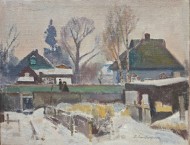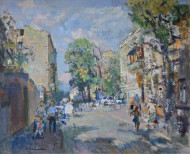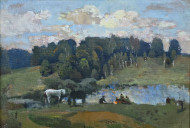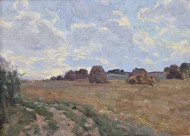- Home
- Lytvynenko Volodymyr - Honored Artist of Ukraine
Lytvynenko Volodymyr - Honored Artist of Ukraine
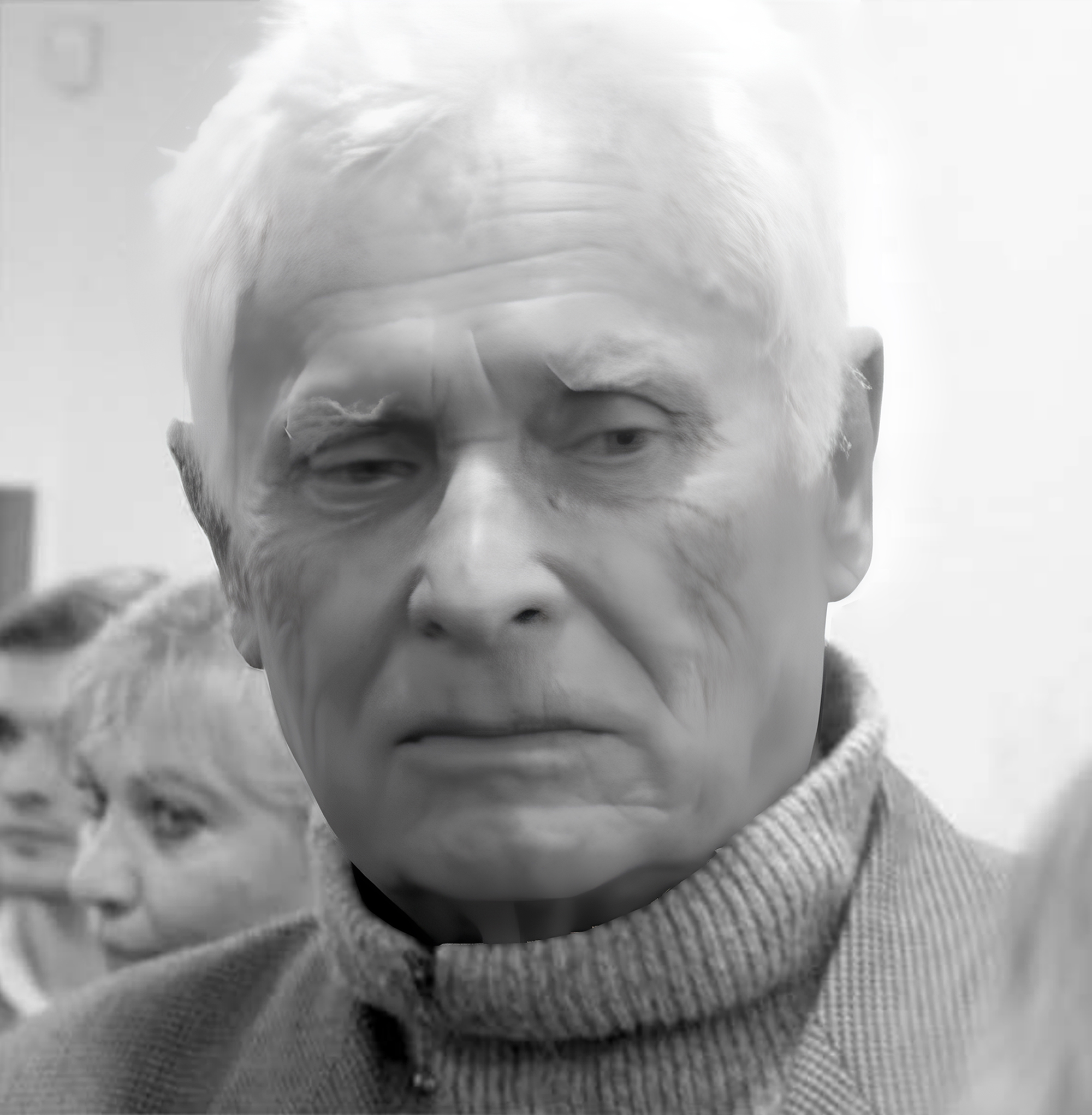
Lytvynenko Volodymyr (1930, Hadiach, Poltava region – 2011, Odesa) was a distinguished Ukrainian artist whose work is intrinsically linked to the concept of the Odesa School of Painting. This influential school, which emerged at the turn of the 19th and 20th centuries through the efforts of the Society of South Russian Artists, is renowned for its exceptional painters and their achievements in genre and landscape painting—a legacy that could bring artistic acclaim to any European nation. It remains a respected authority in the early 21st century. Lytvynenko's name is well-known among art enthusiasts, especially for his exhibitions and auctions in Western Europe and North America during Ukraine's post-Soviet era.
The Odesa School is distinguished by its deep-rooted, unique artistic characteristics, shaped by a stable, European-oriented cultural tradition, the poetic disposition of the city's inhabitants, a rich urban folklore, the distinctiveness of its natural environment, and the presence of its own educational institution—the Odesa Art College. The core tenets of this school's creativity—its accumulated work and experience—have been passed down from generation to generation throughout the more than a century-long history of Odesa's artistic community, without loud declarations or stale rhetoric.
The Artist's development and the influence of the Odesa school
Volodymyr Lytvynenko was born in the Poltava region, but spent his childhood in the Sumy region. In 1948, he moved to Odesa and enrolled in the Odesa Art College named after Mitrofan Grekov. Although his studies were interrupted by military service in the Soviet Army (1951-1953), he successfully completed his education in 1956, presenting his diploma work—the painting "Gorodky"—which earned recognition from the republican commission.
In the postwar years, the college maintained its enduring traditions. Its workshops echoed with the voices of Kyriak Kostandi, Yevhen Bukovetsky, Tyt Dvornikov, Herasym Holovkov, Stepan Kolesnikov, Oleksiy Shovkunenko, Petro Nilus, and Pavlo Volokidin—all former students and teachers who later became exhibition participants, members of art associations, and founders of artistic movements. Even Burliuk, the father of Russian Futurism and a student of Kostandi, studied here. Mykhailo Vrubel and Vasyl Kandinsky, whose artistic paths began in this southern city, left brilliant, fleeting marks on Odesa's artistic landscape. Aivazovsky himself gave master classes in marine painting at the college during his visits to Odesa. The Odesa Art Museum preserves the works of these artists, and the resonance of their artistic footsteps could not be silenced even by the triumphant march of Socialist Realism in the first postwar decade.
At that time, the school was taught by artists of pre-revolutionary and pre-war generations: Danylo Krainev, Mykhailo Zhuk, Teofil Frayerman, Leopold Muchnik, Mykola Pavlyuk, and Mykola Shelyuto. Among the post-war students were: Oleksandr Atsmanchuk, Albin Havdzinsky, Yuriy Yegorov, Mykola Storozhenko, and Kostiantyn Lomykin. It was thanks to this generation of students that a new, powerful surge of public recognition for Odesa painting occurred in the 1960s. The teaching methodology at the school primarily focused on the St. Petersburg Academy of Arts, emphasizing disciplined line adequacy, strong drawing, and tonal relationships in painting. Many graduates of the Odesa Drawing School completed their education in St. Petersburg and then returned to Odesa, ensuring the continuity of the educational process and the succession of generations.
Volodymyr Lytvynenko studied under Martyn Kordonsky, Hryhoriy Kryzhevsky, Mykola Pavlyuk, and Mykola Shelyuto. His contemporaries noted his skill: Albin Havdzinsky warmly recalled working with Volodymyr Lytvynenko, calling him the most capable and talented artist.
Creative works and international recognition
From 1958, Volodymyr Lytvynenko worked at the Odesa Art and Production Combine, and from 1964, he was a member of the Union of Soviet Artists of Ukraine. In 1970, he was awarded the "For Labor Valor" medal. In 2004, he received the title of **Honored Artist of Ukraine**.
Lytvynenko's work shows noticeable influences of Realism, Impressionism, and Post-Impressionism. He worked in the genres of **cityscape, portraiture, still life, and genre painting**. His canvases, especially his landscapes, are filled with light and positivity, a result of his direct, inspired observation of the world. Plein air trips played a special role in shaping his artistic style, allowing him to capture the richness of shades and the dynamism of natural light.
The 1990s marked a period of active international engagement for the artist. From 1991 to 1996, he worked in France, collaborating with well-known auction houses Drouot and Arcole. He traveled extensively, visiting Italy (Genoa, Florence), France (Paris, Nice), Canada (Montreal), the USA (San Francisco, Cincinnati, St. Petersburg), and Greece (Athens).
Volodymyr Lytvynenko's works are represented in art museums in Odesa, Zaporizhzhia, the Romny Local Lore Museum, as well as in museums in Russia, Greece, and numerous private collections worldwide.
Selected exhibitions and legacy
Volodymyr Lytvynenko participated in republican exhibitions starting in 1958.
Solo Exhibitions:
- 1993-1994: Toronto (Canada).
- 1995: Odesa I.I. Mechnikov National University, Odesa.
- 1999: White Moon Gallery, Odesa.
- 2009: NT-Art Gallery, Odesa.
- 2010: Odesa.
- 2011: Posthumous exhibition at the Odesa Art Museum, Odesa (featuring 118 works, with a catalog published).
Selected Group Exhibitions:
- 1990: Reggio Emilia, Italy.
- 1997-2003: Exhibition of Ukrainian Painting in Greece (Athens).
- 1998: Exhibition of Ukrainian Painting in London.
- 2004: Municipal competition "Your Names, Odesa!", awarded a prize.
Volodymyr Mykolayovych Lytvynenko passed away in Odesa on May 1, 2011, leaving behind a vast artistic legacy that is part of the grand tapestry of Ukrainian culture. His works, full of light and dynamism, continue to live on in the memory of connoisseurs and collectors, affirming his status as an outstanding master of the Odesa School.
- 30
- 60
- 90




